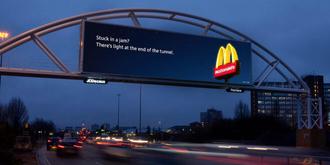Picture a city where people use technology to drive change and better their communities. A city that’s efficient, interconnected and environmentally conscious. That’s a smart city. Although the term has been circulating for years now, we’ve reached a point where ‘smart city’ has grown from a buzzword to a reality.
It’s all about the people
With 55% of the world’s population living in cities, we’re seeing more governments and tech companies investing in smart city initiatives that help improve urban spaces.
Smart cities interact with citizens by guiding them, enriching their commutes, providing them with relevant information and content, and digitally connecting them with their surroundings. To do so, smart cities install hardware, software and network technologies in public spaces.
Part of these technologies are digital signs. Digital displays are a main feature of some of the world’s largest cities, and locals and visitors alike benefit from features that improve their daily lives:
- Live wayfinding
- Free public Wi-Fi
- Weather updates
- Bus and train schedules
- City service information
- Relevant advertising
- Local community information
- Emergency notifications
Digital displays have become a staple in smart cities and are an on-the-go resource for people to access information and stay connected. They’re not only changing cities’ visual landscape but are also reshaping the relationships between people and their communities.
How digital signage helps put the ‘smart’ in smart city
For a city to be truly smart, each piece of the urban infrastructure needs to be integrated and connected (à la internet of things). This enables an open flow of information and data, which drives the entire network and helps cities optimize their services and operations.
Connectivity is key to turning a collection of individual pieces of tech into an exciting, smart, bustling network. This is where a digital signage network fits in.
Not only should a city’s digital screens be connected to each other through a centralized platform, the screens should also have the ability to connect to other technologies throughout the network. By integrating with facial recognition technology, wayfinding solutions, mobile phones and any other relevant IoT device, data can easily be shared across the entire network.
This enables cities to deliver contextual and personalized information to their citizens and visitors. The benefits are twofold, as each screen’s audience behaviour and demographics data can be used to improve other city services.
How digital out-of-home fuels smart cities
1. Benefits for the city
Of course, implementing the infrastructure and maintaining a smart city isn’t without its costs. Luckily, ad space can be sold in order to fund the project, save taxpayers and users hefty fees, and even generate extra revenue for the city. Intersection’s LinkNYC network, which provides free WiFi and telephony services, device charging stations and local wayfinding, is actually fully funded by ad revenue and is set to generate $500 million for New York City.
And these advertisements aren’t necessarily promotional eyesores. The dynamic and creative capabilities of digital out-of-home make for some bright, beautiful campaigns, and can even add charm to a city – who doesn’t love the look of Times Square at night?
2. Benefits for brands and advertisers
City screens have the ability to reach large audiences, and with their connected data, smart cities are an ideal platform to share brand stories. By combining smart screens and smart data, advertisers have the ability to reach their audience with effective messaging. They’re able to create and deliver engaging and dynamic campaigns to large audiences, while also customizing messaging to smaller target groups.
This targeting is even easier with digital out-of-home’s growing adoption of programmatic. Through automated buying, media planners are able to optimize their spend by only delivering their campaign to the right screens at the right time.
3. Benefits for citizens
As mentioned earlier, smart cities are all about the people. While advertising is driven by brands, well executed digital out-of-home campaigns can have a positive impact on consumers. With targeting capabilities as in-depth as facial recognition, and dynamic messaging based on location, weather, time and other real-time data, consumers benefit from advertising that is relevant and contextual.
Just how smart can a city get?
With more cities adopting the ‘smart’ approach, it is only a matter of time that this becomes the norm. This begs the question: what will the next phase of smart cities look like? While we can’t know for sure, we’re excited to see the role digital signage will continue to play in bettering the lives of millions of people around the world.





